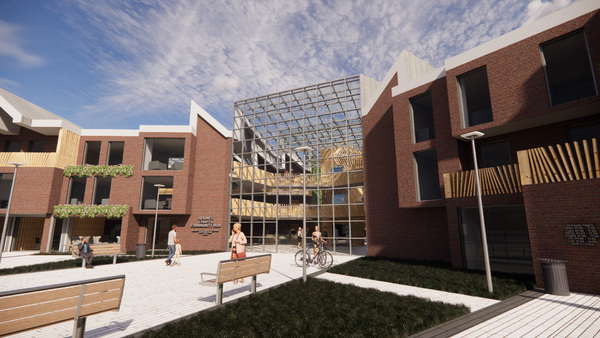“From Crisis To Community: Using Polyphony To Address Stigma And Funding Within Mental Health” is a thesis project that uses the method of Polyphony to generate a new typology that aims to address the current mental health bed crisis within the NHS through the provision of accommodation, treatment facilities and a community hub.
At first, I had to gain a greater understanding of the issues facing people with mental health issues, such as the lack of access to quick treatment which leads many to reach crisis point. My research pointed to two key issues facing society, funding for the services required and the prominence of stigma towards people with mental illnesses. In an aim to provide a solution for these issues I chose to create a group of stakeholders, who could provide opinions and ideas throughout the development of the project.
My masterplan, located in Holmes Chapel, created a settlement strategy whose primary aim was to provide a range of accommodation options that would aid in the transition from institutional living back to reintegration with the community. This approach led to the creation of four distinct accommodation types; communal, semi-independent, independent, and permanent living, all providing a different level of support and independence for the residents.
Alongside the accommodation the masterplan includes two public buildings. The first a workshop space which provides training for residents, as well as an essential form of additional income, and the second a communal hub that contains medical and support facilities. A crucial aspect of the settlement strategy was to ensure full integration within the community. The site and all facilities are fully open to the public, ensuring communication and integration as well as allowing the public to have access to treatment that may not have been readily available before the community hub was created.


